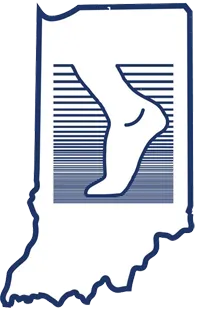The big toe joint (1st Metatarsophalangeal joint) is very important in the gait cycle. The great toe is able to stabilize the arch in midstance and 'toe off' and this is critical for a functional gait and normal arch functioning. When the bone behind the big toe (the 1st metatarsal) is elevated, such as is seen in flat feet, the range of motion of the great toe is decreased. An abnormal length of the first metatarsal bone can also cause a stiff big toe joint. The clinical name for this condition is Hallux Limitus.
I frequently see patients with Hallux Limitus in my clinic. Pain is usually what prompts them to get it checked out. Sometimes they also notice a bump on top of their big toe. When I examine these individuals I usually encounter a decrease in the range of motion of the toe joint, pain as the toe is pushed upwards (dorsiflexed) and/or pain when pressure is applied to the joint. Often hallux limitus is associated with a flat foot structure and tight Achilles tendon. On x-ray I often see bone spurs around the joint (hence the bump) and a decrease in joint space indicating wearing down of the cartilage. Hallux Limitus is basically the 'wear and tear' type of arthritis that people commonly get in their knees or hips.
So how do we treat it?
Treatment depends on the severity of the condition. Conservative treatment may include anti-inflammatory medications, orthotics, steroid injection to the joint, stiff soled shoes etc.. In mild cases of hallux limitus, these conservative treatments can be effective in decreasing pain and even improving motion in the case of orthotics. When the joint degeneration is at a more advanced stage then surgical treatment options are more appropriate. A Cheilectomy is a procedure where the spur we talked about earlier is removed and the joint is cleaned up so to speak. This has been a very effective procedure in my practice and often results in decreased pain and increased range of motion. Patients are usually in a boot for 2-3 weeks and then return to regular shoes. Ambulation is allowed day one. If the joint is degenerated beyond the point where a Cheilectomy can help, then a 'joint destructive procedure' such as an implant of fusion is then required. Fusion usually requires the use of screws and sometimes a plate and non-weightbearing (sometimes weightbearing on the heel is allowed) for 6-8 weeks following surgery.
